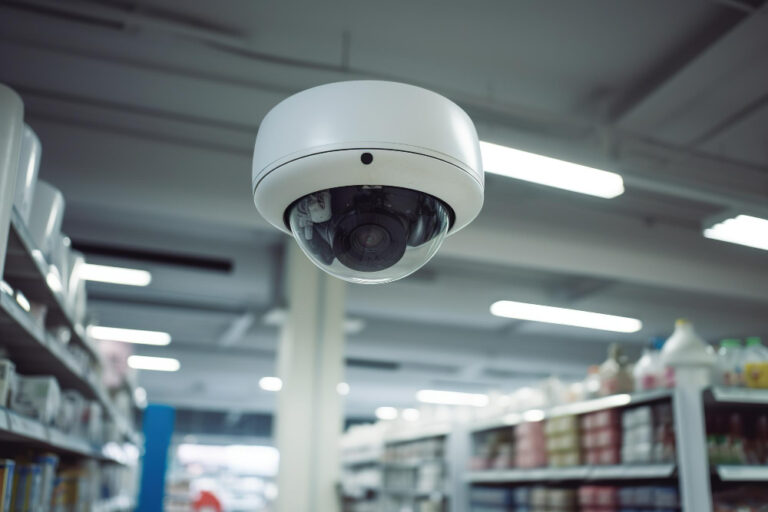In today’s rapidly evolving business landscape, warehouses play a crucial role in the supply chain, serving as hubs for storage, distribution, and logistics. As these facilities become more sophisticated, ensuring their security is paramount. Integrating advanced technologies like surveillance cameras and access control systems can significantly enhance warehouse security, providing a myriad of benefits that go beyond traditional security measures.
1. The Current State of Warehouse Security:
Warehouses, housing valuable inventory and sensitive data, are susceptible to various security threats, including theft, vandalism, and unauthorized access. Traditional security measures such as guards and alarm systems have limitations in terms of coverage and effectiveness. In this context, modernizing warehouse security is imperative.
2. The Rise of Surveillance Cameras:
Surveillance cameras have become a cornerstone of security systems, offering real-time monitoring, recording capabilities, and a deterrent effect on potential intruders. In warehouses, deploying high-quality cameras strategically can cover vast areas, enabling comprehensive surveillance. However, the true potential lies in integrating these cameras with access control systems.
3. Understanding Access Control Systems:
Access control systems regulate who can enter specific areas within a warehouse. This includes electronic key cards, biometric scanners, and PIN codes, providing a layered approach to security. By integrating access control with surveillance cameras, warehouses can create a robust security ecosystem.
1. Advantages of Integration:
-
1. Real-time Monitoring and Incident Response:
- Integrated systems allow for real-time monitoring of both surveillance footage and access control data.
- Security personnel can receive immediate alerts in case of suspicious activities or unauthorized access.
- Swift response times enhance the chances of preventing or minimizing potential security incidents.
-
2. Enhanced Visibility and Accountability:
- Surveillance cameras provide a visual record of events, helping in investigations and audits.
- Access control logs can be synchronized with camera footage, creating a comprehensive timeline of who accessed specific areas and when.
- This visibility enhances accountability among employees and discourages malicious activities.
-
3. Efficient Incident Investigation:
- In the event of a security breach, integrated systems simplify the process of investigating incidents.
- Security teams can quickly retrieve relevant footage and access control data to understand the sequence of events.
- This efficiency aids law enforcement and internal investigations, improving the chances of identifying and apprehending perpetrators.
-
4. Customized Access Permissions:
- Access control systems can be customized to grant different levels of access to different individuals or groups.
- Integration with surveillance cameras ensures that access permissions align with the visual identification of individuals entering restricted areas.
- This targeted approach reduces the risk of internal threats and ensures that only authorized personnel can access sensitive zones.
-
5. Scalability and Future-Proofing:
- Integrated systems are scalable, allowing warehouses to expand their security infrastructure as the business grows.
- Future-proofing is achieved by incorporating the latest technologies, ensuring that the security system remains effective in the face of evolving threats.
2. Case Studies and Success Stories:
Several warehouses have already embraced the integration of surveillance cameras and access control systems, experiencing tangible improvements in security. Case studies highlight instances where the integrated approach thwarted theft, protected valuable assets, and contributed to a safer working environment.
3. Challenges and Considerations:
While the benefits of integration are clear, warehouses must be mindful of potential challenges. Privacy concerns, cybersecurity threats, and the need for proper training for personnel handling these systems are critical considerations. Addressing these challenges ensures a seamless and secure implementation.
4. The Future of Warehouse Security:
As technology continues to advance, the future of warehouse security holds even more promise. Artificial intelligence and machine learning algorithms can be integrated with surveillance cameras to enable proactive threat detection, further fortifying warehouses against evolving security risks.
Conclusion:
The integration of surveillance cameras and access control systems marks a transformative shift in warehouse security. By creating a cohesive and intelligent security ecosystem, warehouses can proactively protect their assets, enhance employee safety, and adapt to the dynamic challenges of the modern business landscape. As the industry continues to evolve, embracing these integrated solutions will be crucial in maintaining a secure and resilient warehouse environment.

